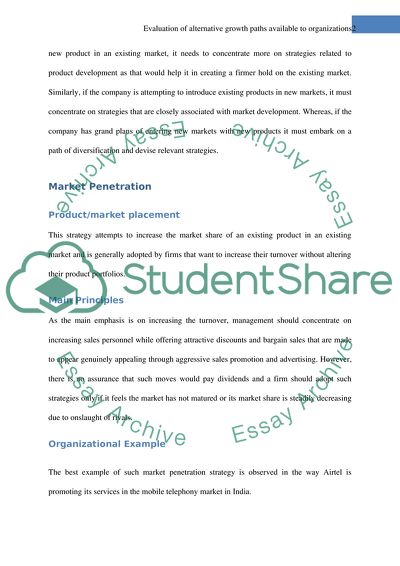Cite this document
(Ansoffs Matrix Research Proposal Example | Topics and Well Written Essays - 2500 words, n.d.)
Ansoffs Matrix Research Proposal Example | Topics and Well Written Essays - 2500 words. https://studentshare.org/marketing/1749846-with-the-aid-of-specific-real-life-organisational-examples-critically-evaluate-the-alternative-strategic-growth-paths-available-to-business-organisations-as-identified-by-ansoffs-1957-matrix
Ansoffs Matrix Research Proposal Example | Topics and Well Written Essays - 2500 words. https://studentshare.org/marketing/1749846-with-the-aid-of-specific-real-life-organisational-examples-critically-evaluate-the-alternative-strategic-growth-paths-available-to-business-organisations-as-identified-by-ansoffs-1957-matrix
(Ansoffs Matrix Research Proposal Example | Topics and Well Written Essays - 2500 Words)
Ansoffs Matrix Research Proposal Example | Topics and Well Written Essays - 2500 Words. https://studentshare.org/marketing/1749846-with-the-aid-of-specific-real-life-organisational-examples-critically-evaluate-the-alternative-strategic-growth-paths-available-to-business-organisations-as-identified-by-ansoffs-1957-matrix.
Ansoffs Matrix Research Proposal Example | Topics and Well Written Essays - 2500 Words. https://studentshare.org/marketing/1749846-with-the-aid-of-specific-real-life-organisational-examples-critically-evaluate-the-alternative-strategic-growth-paths-available-to-business-organisations-as-identified-by-ansoffs-1957-matrix.
“Ansoffs Matrix Research Proposal Example | Topics and Well Written Essays - 2500 Words”. https://studentshare.org/marketing/1749846-with-the-aid-of-specific-real-life-organisational-examples-critically-evaluate-the-alternative-strategic-growth-paths-available-to-business-organisations-as-identified-by-ansoffs-1957-matrix.


